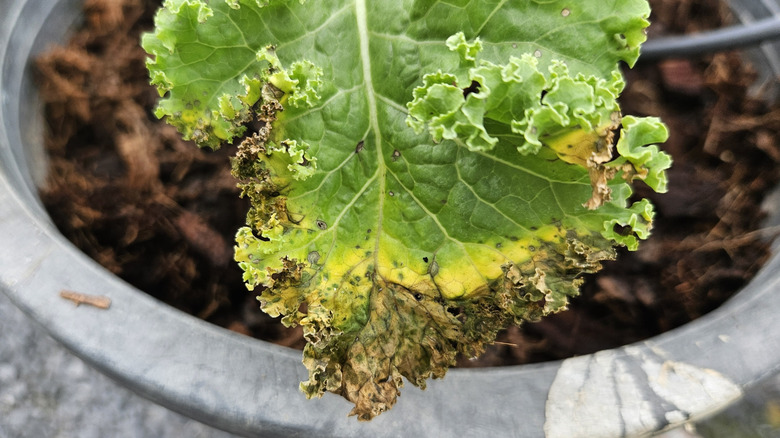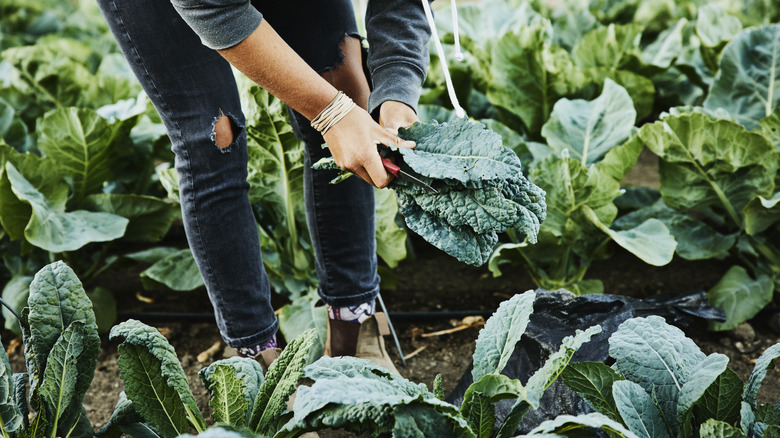Why Your Kale Plant Has Yellow, Droopy Leaves (& How To Prevent It)
If your kale plant's leaves are turning yellow and starting to droop, it may not always be for an obvious reason. Kale is generally a hardy crop, but when it looks pale and floppy, the cause is usually stress from a number of places. One of the most common culprits is temperature. Kale is a cool-season vegetable. Although it likes the sun, the heat of summer can stress kale, affecting the flavor and growth. Kale grows best at 75 degrees Fahrenheit or cooler. A layer of mulch around the base can help regulate soil moisture and keep the roots cool. Overwatering can also be a reason your kale leaves are droopy and yellow. Kale likes consistent moisture, but waterlogged roots quickly lead to yellowing leaves and a limp plant. Check that your soil drains well and avoid allowing the plant to sit in soggy conditions. Aim for one inch per week of water. In sandy soil, it may be best to water more than once a week.
Much like when basil leaves turn yellow, another underlying cause can be a nutrient imbalance. For kale, this may be a lack of nitrogen, which the plant craves for producing lush, dark leaves. If your plants are fading to pale green or yellow from the bottom up, they may need a nitrogen-rich boost, such as composted manure or fish emulsion. Lastly, don't overlook pests. Flea beetles and cabbage worms, although not as common on kale, can still be a problem. If a heavy infestation goes unchecked, it can weaken the plant, leading to discolored, limp foliage. To keep ahead of it, flip over a few leaves daily and inspect for movement, eggs, or sticky residue.
Grow kale the right way to prevent yellow leaves
Keeping your kale healthy starts with planting at the right time. Kale prefers cool weather, even a touch of frost on the leaves, which means it's best grown in early spring or late summer for a fall harvest. When grown during the hottest part of the season, kale often struggles with stress, resulting in yellow, droopy leaves. If your climate has mild winters, you may even be able to grow it straight through the cold season with a little protection. Another factor is how often to water your garden for healthy vegetables. Kale grows best in evenly moist soil, but not in soggy conditions. Use mulch to hold moisture and regulate soil temperature, especially during warm spells. Water the base of the plant early in the day to reduce the risk of fungal disease.
To guard against insects like flea beetles and cabbage moths, consider using floating row covers as soon as your seedlings go in the ground. These lightweight fabrics block adult pests from laying eggs on your plants while still allowing sunlight and rain to pass through.
Finally, avoid planting kale (or any brassica vegetables) in the same spot more than once every four years. Rotating your vegetable garden crops is easy and so worth it to help prevent diseases. It also disrupts pest life cycles that linger in the soil. By choosing the right planting window, watering carefully, and protecting against insects and soil fatigue, you'll give your kale the best chance to thrive with strong stems and deep green leaves.

